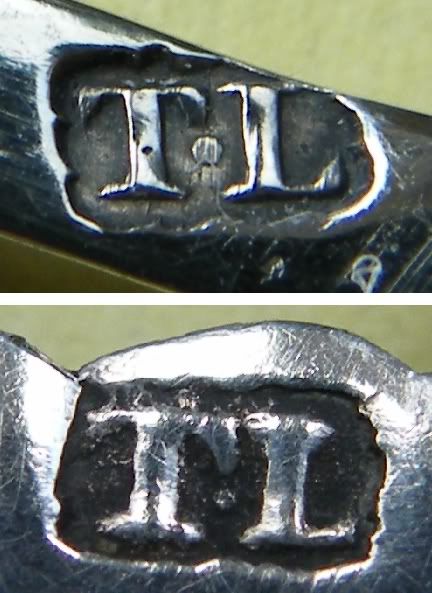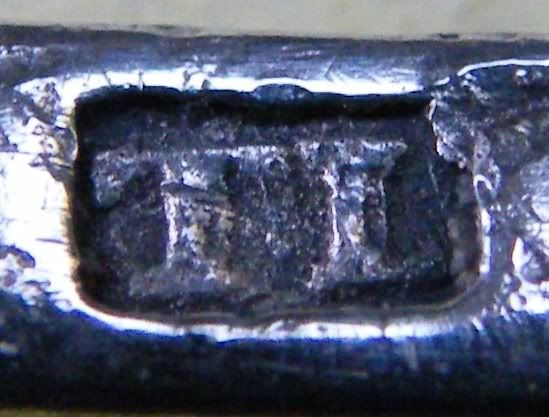Two marks from small buckles.
Top is from a stock buckle, the bottom from a knee buckle, both with Lions Passant of the London 1756 —1784 form.
I think both are two examples of the same mark. Both have pellets

TL silversmiths suspects include
Thomas Latham - his only recorded mark , a bucklemaker mark of 1774 had, according to Grimwade no pellet.
Thomas Lownes - his sole recorded mark was a joint one with Edward Lycett as bucklemakers .
Thomas Liddiard - his only recorded mark , a smallworker mark of 1770 had, according to Grimwade no pellet. He was one of the deputation of six that presented the bucklemakers petition to the King in 1792 although he himself seems to have moved on to better things by then. He retired in 1794
Thomas Lamborn (Grimwade 2824 ) had two smallworker marks, one without pellet registered in 1759, and another “similar” according to Grimwade in 1769. I have no references to him as a maker of buckles
Thomas Lovidge a silversmith not in any of the registers, but who had buckles broken in the 1763 to 1769 period by Goldsmiths Hall is another possibility. He does not appear in the PR1773 .
The matter is complicated by the existance of a third TL mark, on a knee buckle that stylistically cannot be much earlier than 1780, nor, due to absence of duty mark be later than 1784.

I think it has a pellet, but after staring at it on numerous occasions am still not able to say for sure !
I am very uncertain if this is the same punch as the two first marks.
If it is the same mark then datewise I think Lovidge is out of the running.
If a different one, my guess is a late unregistered mark of one of the other suspects and Loveridge is still on the list for the first mark.
.